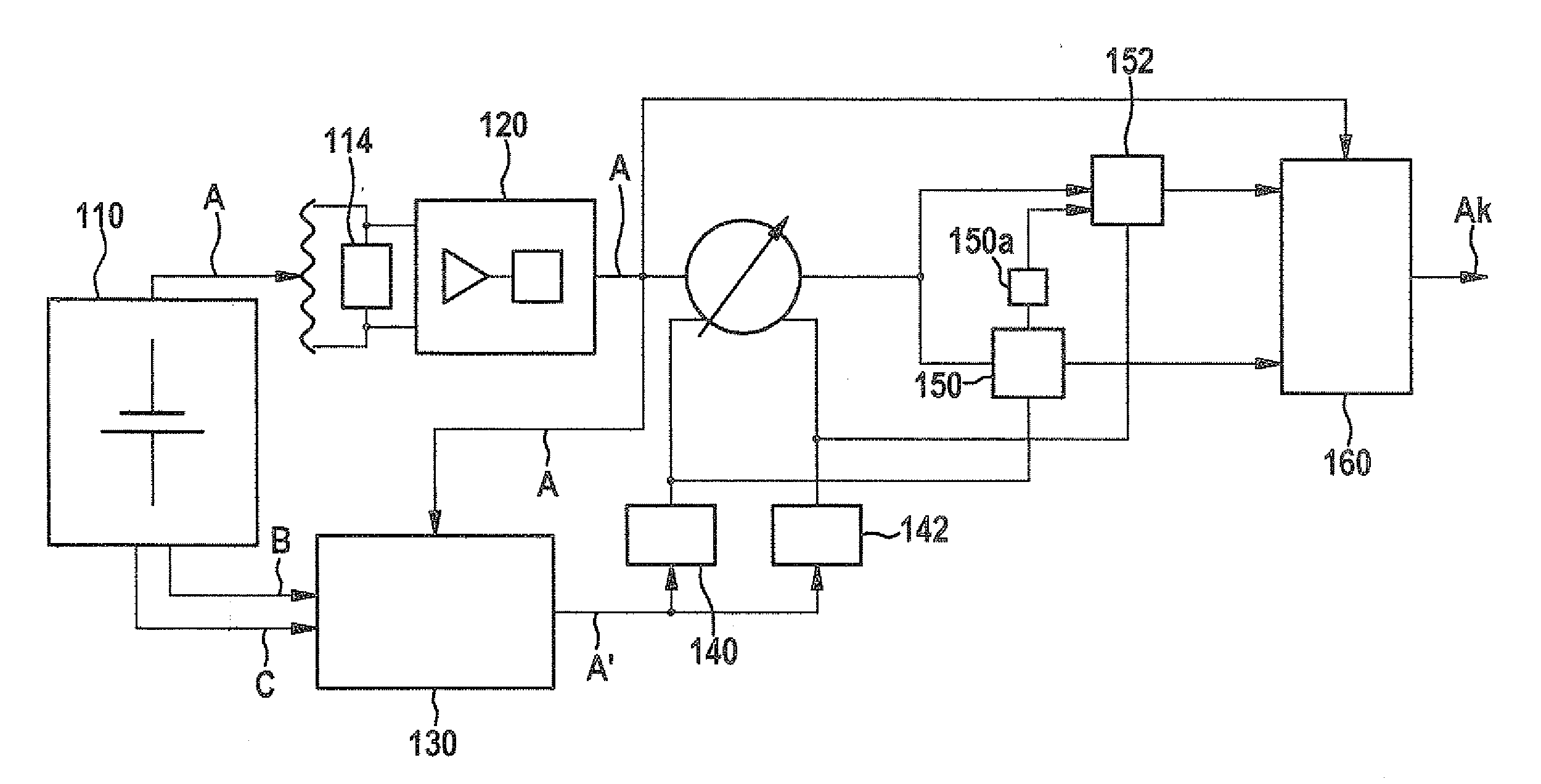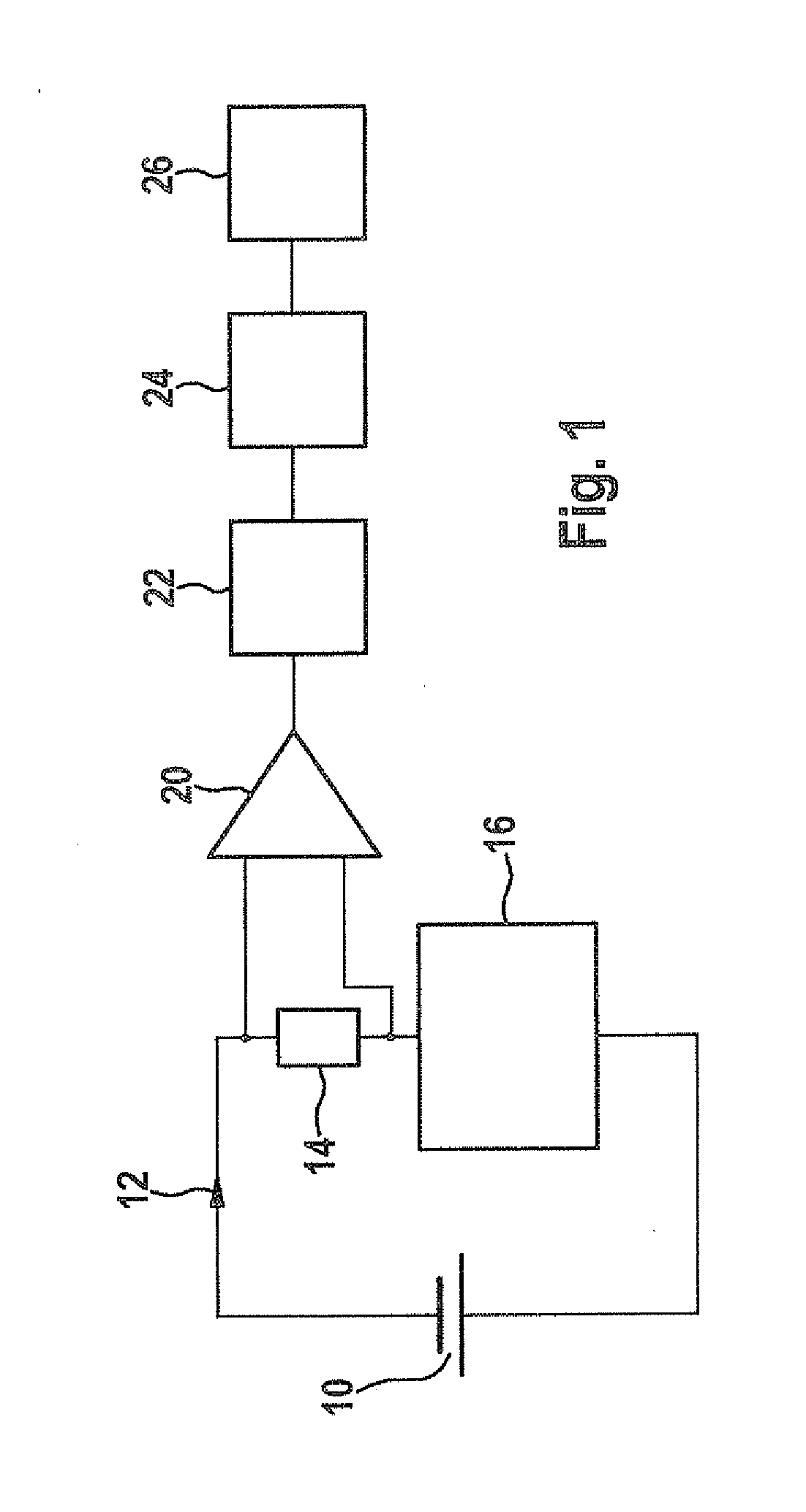Method and device for error-compensated current measurement of an electrical accumulator
a technology of error-compensated current and electrical accumulator, which is applied in the direction of measurement devices, electrical measurements, instruments, etc., can solve the problems of additive errors, and achieve the effects of high manufacturing tolerance, high measuring accuracy, and high manufacturing toleran
- Summary
- Abstract
- Description
- Claims
- Application Information
AI Technical Summary
Benefits of technology
Problems solved by technology
Method used
Image
Examples
Embodiment Construction
[0051]FIG. 1 shows an accumulator 10, which generates current 12 which flows through a shunt resistor 14 and a consumer 16. Accumulator 10, shunt resistor 12, and consumer 16 form a closed circuit. Instead of shunt resistor 10, a continuous line may be used, a Hall sensor or some other magnetic sensor detecting the magnetic field generated by current 12 and deducing current 12 therefrom. The dropping voltage at the shunt resistor 14 is supplied to a buffer circuit 20, which has a high internal resistance and optionally amplifies the voltage signal. The output of the buffer circuit is connected to a sample-and-hold stage 22, which samples and holds the analog value supplied by buffer circuit 20, and relays same to an A / D converter 24, which generates a digital value from the analog signal and supplies the digital value to microcontroller 26 for further processing. Elements 20, 22, 24 and optionally also 26 are elements of a signal preprocessing circuit, each of which introduces error...
PUM
 Login to View More
Login to View More Abstract
Description
Claims
Application Information
 Login to View More
Login to View More - R&D
- Intellectual Property
- Life Sciences
- Materials
- Tech Scout
- Unparalleled Data Quality
- Higher Quality Content
- 60% Fewer Hallucinations
Browse by: Latest US Patents, China's latest patents, Technical Efficacy Thesaurus, Application Domain, Technology Topic, Popular Technical Reports.
© 2025 PatSnap. All rights reserved.Legal|Privacy policy|Modern Slavery Act Transparency Statement|Sitemap|About US| Contact US: help@patsnap.com



